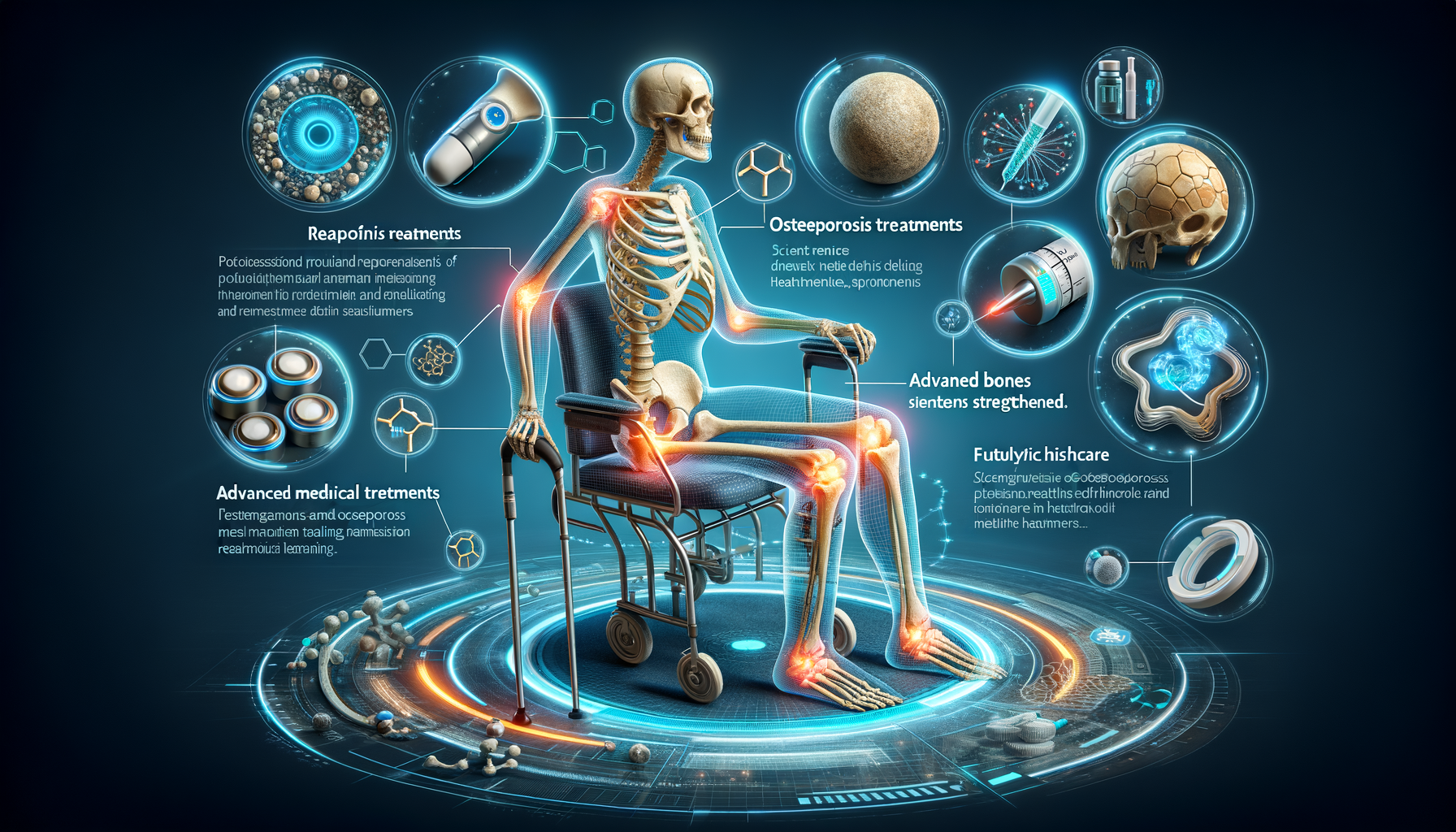Understanding Osteoporosis and Its Impact
Osteoporosis is a condition characterized by weakened bones, increasing the risk of sudden and unexpected fractures. This condition is often referred to as a “silent disease” because it can progress without any symptoms until a fracture occurs. Understanding the impact of osteoporosis is crucial as it affects millions of people worldwide, particularly postmenopausal women and the elderly. The importance of addressing osteoporosis cannot be overstated, as fractures related to this condition can lead to significant morbidity, reduced quality of life, and even mortality.
The skeletal system is dynamic, constantly undergoing a process of bone resorption and formation. In osteoporosis, this balance is disrupted, leading to decreased bone density and structural deterioration. The consequences of this imbalance are severe, with common fracture sites including the hip, spine, and wrist. Such fractures can lead to chronic pain, disability, and a loss of independence in daily activities.
While the prevalence of osteoporosis is alarming, there is a silver lining. Advances in medical research have led to the development of various treatments that can significantly mitigate the risks associated with this condition. These treatments aim to strengthen bones, reduce fracture risks, and improve overall bone health. Understanding and implementing these treatments is vital for anyone at risk of or currently living with osteoporosis.
Pharmacological Treatments for Osteoporosis
Pharmacological treatments for osteoporosis are diverse, targeting different aspects of bone metabolism to enhance bone density and reduce fracture risk. These medications have been rigorously tested and are highly rated for their effectiveness in managing osteoporosis.
One of the primary classes of medications used is bisphosphonates. These drugs work by inhibiting bone resorption, thereby maintaining or increasing bone density. Commonly prescribed bisphosphonates include alendronate and risedronate, which have been shown to significantly decrease the risk of hip and spine fractures. Patients are often advised to take these medications with water and remain upright for at least 30 minutes to minimize gastrointestinal side effects.
Another option is selective estrogen receptor modulators (SERMs), like raloxifene. These drugs mimic estrogen’s beneficial effects on bones without some of the risks associated with hormone replacement therapy. Raloxifene is particularly effective in reducing vertebral fractures and is often prescribed for postmenopausal women.
Denosumab, a monoclonal antibody, is another treatment option. It works by inhibiting a protein involved in bone resorption, leading to increased bone mass and strength. Administered via injection every six months, denosumab is suitable for individuals who cannot tolerate oral medications.
For those with severe osteoporosis or who have not responded to other treatments, teriparatide, a form of parathyroid hormone, is available. It stimulates new bone formation and is administered through daily injections. While effective, its use is typically limited to a two-year period due to potential side effects.
Lifestyle Modifications and Nutritional Support
While pharmacological treatments play a critical role in managing osteoporosis, lifestyle modifications and nutritional support are equally important. These non-pharmacological approaches can significantly enhance the effectiveness of medications and contribute to overall bone health.
Engaging in regular weight-bearing and muscle-strengthening exercises is one of the most effective ways to improve bone density and reduce fracture risk. Activities such as walking, jogging, dancing, and resistance training help stimulate bone formation and improve balance, reducing the likelihood of falls.
Nutritional support is another cornerstone of osteoporosis management. Adequate intake of calcium and vitamin D is essential for maintaining bone health. Calcium can be obtained from dietary sources such as dairy products, leafy greens, and fortified foods, while vitamin D is synthesized in the skin through sunlight exposure and can also be found in fatty fish and supplements.
In addition to calcium and vitamin D, a balanced diet rich in fruits, vegetables, and lean proteins supports overall health and bone maintenance. Limiting alcohol consumption and avoiding smoking are also crucial, as these habits can negatively impact bone health.
Implementing these lifestyle modifications requires commitment, but the benefits are substantial. By combining these approaches with pharmacological treatments, individuals with osteoporosis can significantly improve their quality of life and reduce the risk of debilitating fractures.
Innovative Research and Future Directions
The field of osteoporosis treatment is continuously evolving, with ongoing research paving the way for innovative therapies that promise to enhance patient outcomes. Understanding these developments is essential for anticipating future trends in osteoporosis management.
One area of active research is the development of new medications that target different pathways involved in bone metabolism. For example, romosozumab, a monoclonal antibody, has shown promise in clinical trials by both increasing bone formation and decreasing bone resorption. This dual action could offer significant advantages over existing treatments.
Gene therapy is another exciting frontier. Researchers are exploring ways to manipulate genes involved in bone growth and maintenance, potentially offering personalized treatment options that address the underlying causes of osteoporosis.
Additionally, advancements in diagnostic tools are improving the ability to assess fracture risk and monitor treatment effectiveness. Techniques such as high-resolution imaging and bone turnover markers provide more detailed insights into bone health, allowing for more tailored treatment plans.
As research progresses, the integration of artificial intelligence and machine learning in osteoporosis management is also gaining traction. These technologies have the potential to analyze vast amounts of data, offering predictive insights and optimizing treatment strategies for individual patients.
The future of osteoporosis treatment is promising, with these innovations holding the potential to transform how this condition is managed. Staying informed about these developments will be crucial for healthcare providers and patients alike.
Conclusion: Taking Charge of Bone Health
Osteoporosis is a significant health concern that requires a comprehensive approach to management. By understanding the various treatment options available, individuals can take proactive steps to protect their bone health and reduce fracture risks.
Pharmacological treatments, including bisphosphonates, SERMs, denosumab, and teriparatide, offer effective solutions for increasing bone density and preventing fractures. When combined with lifestyle modifications such as regular exercise and nutritional support, these treatments can significantly enhance patient outcomes.
Looking ahead, ongoing research and technological advancements promise to revolutionize osteoporosis management. By staying informed and engaged with these developments, individuals can make informed decisions about their treatment options and take charge of their bone health.
Ultimately, a proactive and informed approach to osteoporosis can lead to a healthier, more active life, free from the limitations imposed by this condition.




Leave a Reply